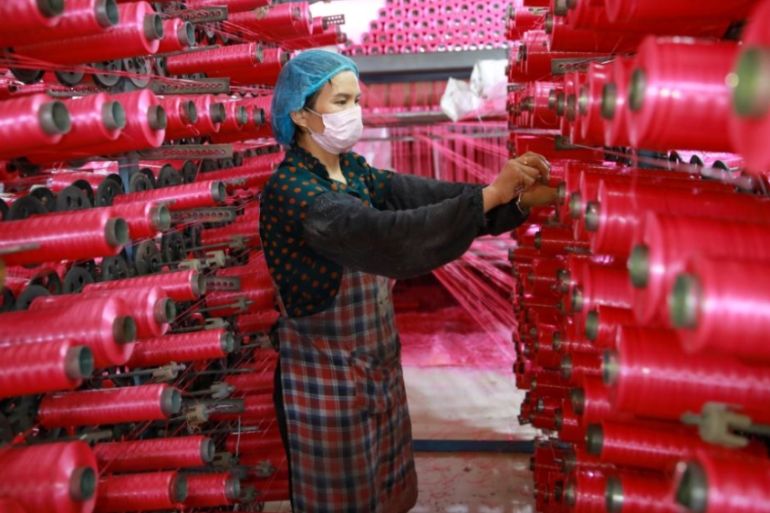Asian manufacturing slumps further as trade war persists
Slowing global demand and ongoing US-China trade tensions continue to keep factory activity weak across Asia.

Asia’s export powerhouses saw factory activity shrink further in October, as cooling global demand and trade tensions keep policymakers busy ramping up support for their fragile economies to help dodge recession.
Manufacturing activity in North Asia contracted with Japan‘s sinking to a more than three-year low in October on shrinking new orders and output, according to data from IHS Markit, which compiles monthly data from purchasing managers globally.
Keep reading
list of 3 itemsJapan’s exports slump for tenth straight month
Clouds gathering over East Asia’s economic horizon: World Bank
Activity in South Korea and Taiwan also shrank as companies bore the brunt of slumping demand across the globe.
More:
In China, the private sector purchasing managers’ index (PMI) also known as the Caixin, showed a surprising pick-up in factory activity. It expanded at its fastest pace in more than two years in October as new export orders rose and plants ramped up production, the survey found.
But this was in contrast to an official factory gauge the day before, which pointed to a further deterioration, suggesting a weak start to the fourth quarter for big state firms.
Overall, the soft batch of leading indicators highlights the broadening pain the bitter United States-China trade war is inflicting on business sentiment, which forced the International Monetary Fund to slash its economic growth forecast for Asia.
“The slump in exports remains the true Achilles’ heel…with headwinds coming from all directions,” said Joe Hayes, economist at IHS Markit, on South Korea’s PMI.
“As well as US-Sino trade frictions, tensions with Japan and a stagnating European economy have significantly dented order book volumes at South Korean manufacturers,” he said.
Policy loosening
Increased uncertainty from the trade war and Britain’s divorce from the European Union have prodded central banks to top up monetary support to fend off external headwinds.
The US Federal Reserve slashed interest rates on Wednesday for the third time this year. South Korea’s central bank also cut rates in October and kept the door open for further easing to support a flagging economy.
The Bank of Japan (BOJ) kept policy steady on Thursday but gave the strongest signal to date that it may cut rates in the near future, shrugging off concerns it has run out of tools to spur growth after years of heavy support to the economy.
“It’s true the two countries appear to be making some progress towards a solution, and that markets are taking this positively,” BOJ Governor Haruhiko Kuroda told a news conference on Thursday. “But I wouldn’t say risks have deteriorated.”
Fresh concerns over whether Washington and Beijing can iron out their difference resurfaced on Friday after Bloomberg reported that Chinese officials have doubts about reaching a comprehensive long-term solution to the trade war.
The nearly 16-month-long trade war is placing increasing strain on the global economy and may see policymakers resort to a more aggressive mix of fiscal and monetary measures in the coming months.
Factory activity contracted in Malaysia and Indonesia, which saw PMIs hitting a four-year low. Activity was flat in Vietnam.
Japan’s exports contracted for a 10th straight month in September, casting doubt on whether the world’s third-largest economy can sustain an expansion as households take a hit from a sales tax hike that went into effect in October.
South Korea, the world’s sixth-largest exporter, also saw economic growth slow more than expected in the third quarter due to a slump in domestic spending and global trade headwinds.